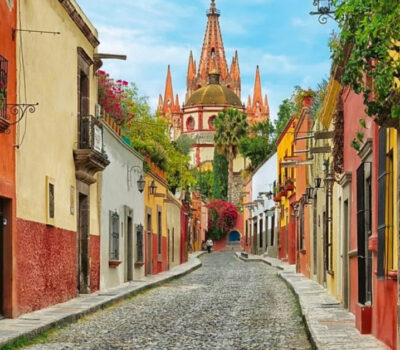Less than two years into Enrique Pena Nieto’s presidency, Mexico is implementing an ambitious structural-reform package designed to lift its economy out of a multi-decade low-growth trap and create new opportunities for its citizens. The reforms involve restructuring economic sectors once deemed politically untouchable, and are backed by constitutional amendments and a bold legislative agenda.
Indeed, thanks to the “Pact for Mexico,” much of this agenda has the support not only of Pena Nieto’s government, but also of the two main opposition parties. This unique arrangement soon will be tested as the reforms begin to bite, and the outcome could have important and lasting consequences for efforts to implement structural reforms elsewhere around the world.
Such reforms are never easy to initiate and are usually difficult to complete. Politicians advocate them when they are in opposition, but rarely embrace and sustain them when in government. The reason is simple: front-loaded costs and back-loaded benefits make structural reforms politically perilous.
Governments that do embark on structural reform often find it frustrating to wait for that often-elusive “critical mass” of revitalized sectors to materialize; and economists find it very difficult to predict the timing and magnitude of the growth liftoff that should follow. Complicating matters further, the inevitability of unanticipated developments, whether homegrown or external in origin, means that course corrections often are needed.
As a result, there are only a few good historical examples ― including China, Poland, and South Korea ― of successful structural reforms. And many dismiss countries that succeed as “special” or “unique” ― and thus of little value as a model for other countries to emulate.
Against this background, it is fascinating to observe what is happening in Mexico. The “why,” “how,” and “what” of the country’s ambitious structural-reform efforts could ― and should ― have important signaling effects around the world.
Mexican officials are the first to point out their country’s relatively poor economic performance over the last 33 years. Average annual growth, at only 2.4 percent, is well below what is needed and possible for a country with such enormous human and natural endowments, a prime location on the United States’ doorstep, and considerable catch-up potential. Moreover, Mexico’s growth record is far inferior to that of some other countries that started with a lot less and yet leap-frogged it (and other Latin American economies).
Policymakers could easily dodge responsibility for Mexico’s middling performance by hiding behind the various emerging-market crises, Latin America’s “lost decade,” and the impact of the 2008 global financial crisis and the subsequent Great Recession. But Mexico’s officials are not looking for excuses. Instead, they point to domestic indicators showing poor productivity and competitiveness, both over time and relative to other countries. They also note that Mexico’s impressive accomplishments in terms of macroeconomic stabilization, while necessary, have not proved sufficient to unleash the country’s growth potential.
Yes, Mexico has built strong domestic and foreign financial buffers, put its fiscal house in order, opened up its economy to the outside world, and concluded many free-trade arrangements, led by the North American Free Trade Agreement. But now the time has come to build on this progress by simultaneously reforming five large and influential sectors: education, energy, finance, telecommunications, and the labor market. And Pea Nieto’s government has worked hard ― and successfully ― in recent months to adopt the necessary constitutional amendments and enact initial legislation.
At least three of these areas ― education, energy, and the labor market ― were long deemed untouchable or nearly so. Indeed, I remember my own experience in Mexico in the late 1980s and early 1990s, when I was part of the International Monetary Fund’s team working with officials there to assist with the country’s recovery from the Latin American debt crisis. Any mention of energy reforms was met with immediate resistance, including references to national sovereignty and constitutional protections.
Today, Mexico is seeking long-term foreign investors to support ambitious and comprehensive reform efforts, with foreign participation particularly important for infrastructure investments in telecom networks, toll roads, gas pipelines, and, down the road, the oil sector.
All of this is anchored by a clear political mandate, as well as by Pea Nieto’s stated personal commitment to overcome three decades of inadequate growth and productivity deficits. Given the possibility of a domestic political backlash, the inherent complexities of implementing a multi-dimensional reform package, and the cyclical headwinds implied by still-sluggish growth in the U.S. (which accounts for roughly 80 percent of exports), Mexico may need both anchors if it is to sustain reform momentum. Fortunately, the government has room for countercyclical policy, and has already responded with more accommodating fiscal and monetary policies.
Mexico has a good chance to realize its impressive structural-reform agenda. Doing so would give the rest of the world an important example of how such programs can be designed and implemented for the long term, thereby enabling a critical mass of strong sectors ― and thus faster growth and greater prosperity ― to be achieved and citizens’ legitimate aspirations to be met.
By Mohamed A. El-Erian
Less than two years into Enrique Pena Nieto’s presidency, Mexico is implementing an ambitious structural-reform package designed to lift its economy out of . . .











